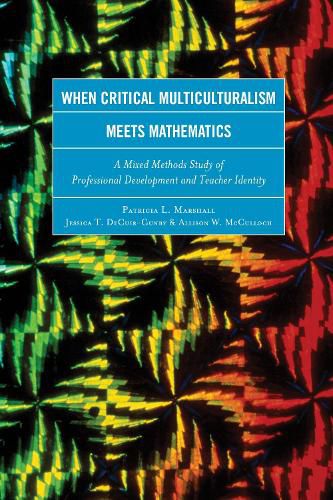Readings Newsletter
Become a Readings Member to make your shopping experience even easier.
Sign in or sign up for free!
You’re not far away from qualifying for FREE standard shipping within Australia
You’ve qualified for FREE standard shipping within Australia
The cart is loading…






When Critical Multiculturalism Meets Mathematics details the development and outcomes of a teacher professional development project that merged multiculturalism and mathematics. In six compact chapters the authors describe the impetus for their multi-year project and present rich case studies of nine teacher participants. The cases stand alone as compelling reading, yet Marshall et al. extend beyond their distinctiveness to explain the statistical data related to the project’s broader impact. Emphasizing both qualitative and quantitative findings makes this book ideal for novice researchers interested in mixed method study. Likewise, the authors unveil the anatomy and a few complexities of conducting research in the real world contexts of schools including participant recruitment and resolution of unanticipated matters that can arise within research teams. A unique twist in the final chapter is Marshall et al.‘s critique of their own missteps as researchers, which are used skillfully and unobtrusively to proffer tips for future studies. They conclude by theorizing affirmed intersectionality, identified as the critical element that facilitated teachers’ recognition and acceptance of the compatibility between the study’s two components.
$9.00 standard shipping within Australia
FREE standard shipping within Australia for orders over $100.00
Express & International shipping calculated at checkout
When Critical Multiculturalism Meets Mathematics details the development and outcomes of a teacher professional development project that merged multiculturalism and mathematics. In six compact chapters the authors describe the impetus for their multi-year project and present rich case studies of nine teacher participants. The cases stand alone as compelling reading, yet Marshall et al. extend beyond their distinctiveness to explain the statistical data related to the project’s broader impact. Emphasizing both qualitative and quantitative findings makes this book ideal for novice researchers interested in mixed method study. Likewise, the authors unveil the anatomy and a few complexities of conducting research in the real world contexts of schools including participant recruitment and resolution of unanticipated matters that can arise within research teams. A unique twist in the final chapter is Marshall et al.‘s critique of their own missteps as researchers, which are used skillfully and unobtrusively to proffer tips for future studies. They conclude by theorizing affirmed intersectionality, identified as the critical element that facilitated teachers’ recognition and acceptance of the compatibility between the study’s two components.